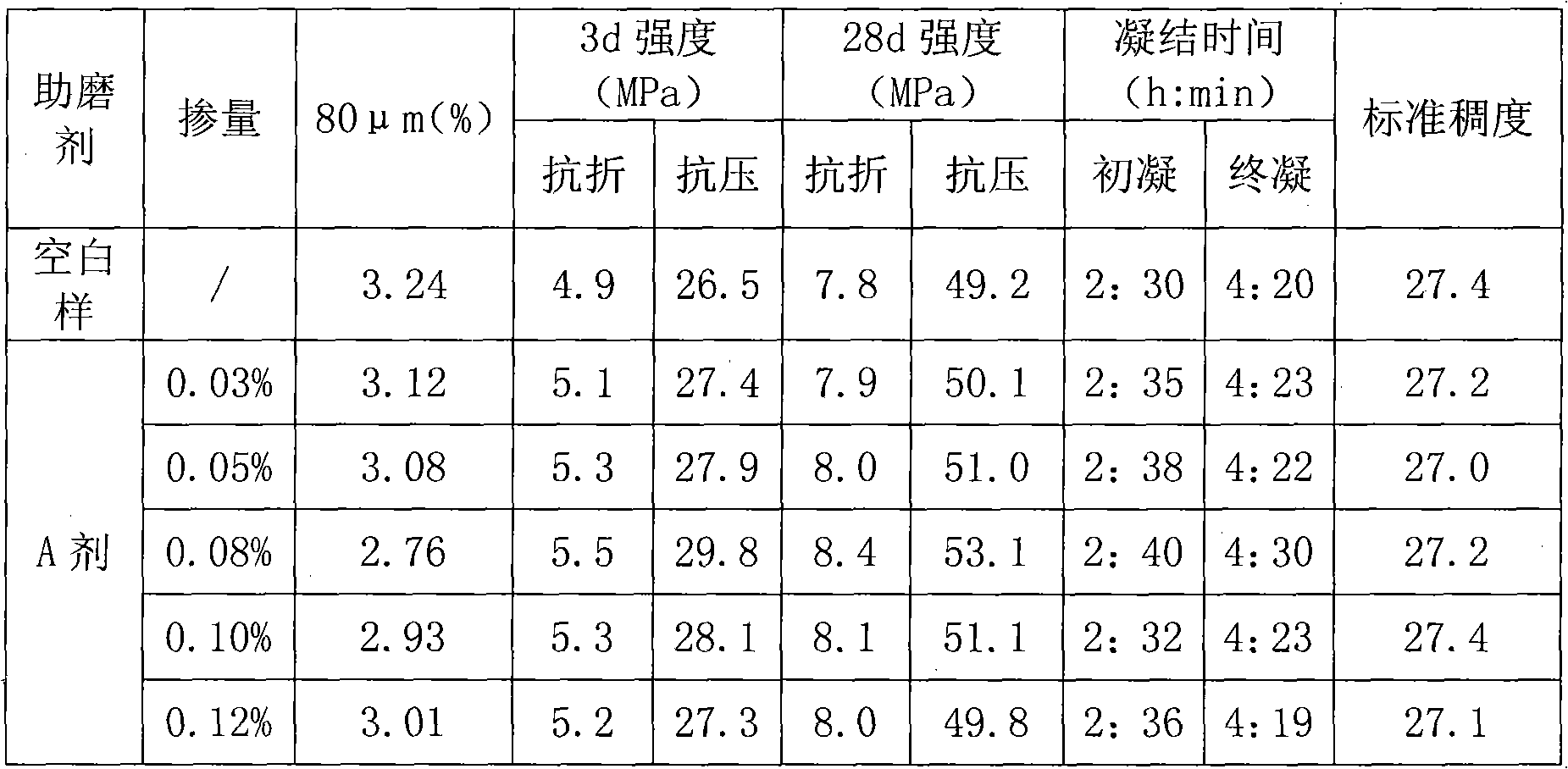Cement grinding aid
A cement grinding aid and grinding aid technology, applied in the field of cement grinding aid materials, can solve problems such as difference in effect, hazards of cement or concrete, etc., and achieve the effects of low water demand, increased cement output, and high fluidity
- Summary
- Abstract
- Description
- Claims
- Application Information
AI Technical Summary
Problems solved by technology
Method used
Image
Examples
Embodiment 1
[0021] Agent A formula: calcium formate solution (mass concentration 30%) 40 wt%, compound glycerol distillation residue solution (mass concentration 50%) 23 wt%, triethanolamine 8 wt%, ethylene glycol 4 wt%, and molasses 25 wt%. The composite glycerol distillation residue solution contains 30wt% sodium lignosulfonate.
[0022] Mix the above formulas into a grinding aid.
Embodiment 2
[0024] Formulation of agent B: calcium formate solution (concentration 30%) 40%, compound glycerol distillation residue solution (concentration 50%) 23%, triethanolamine 8%, diethylene glycol 4%, molasses 25%. The compound glycerol distillation residue solution contains 30% sodium lignosulfonate.
Embodiment 3
[0026] Agent C formula: calcium formate solution (concentration 30%) 40%, compound glycerol distillation residue solution (concentration 50%) 23%, triethanolamine 8%, propylene glycol 4%, molasses 25%. The compound glycerol distillation residue solution contains 30% sodium lignosulfonate.
PUM
 Login to View More
Login to View More Abstract
Description
Claims
Application Information
 Login to View More
Login to View More - R&D
- Intellectual Property
- Life Sciences
- Materials
- Tech Scout
- Unparalleled Data Quality
- Higher Quality Content
- 60% Fewer Hallucinations
Browse by: Latest US Patents, China's latest patents, Technical Efficacy Thesaurus, Application Domain, Technology Topic, Popular Technical Reports.
© 2025 PatSnap. All rights reserved.Legal|Privacy policy|Modern Slavery Act Transparency Statement|Sitemap|About US| Contact US: help@patsnap.com



